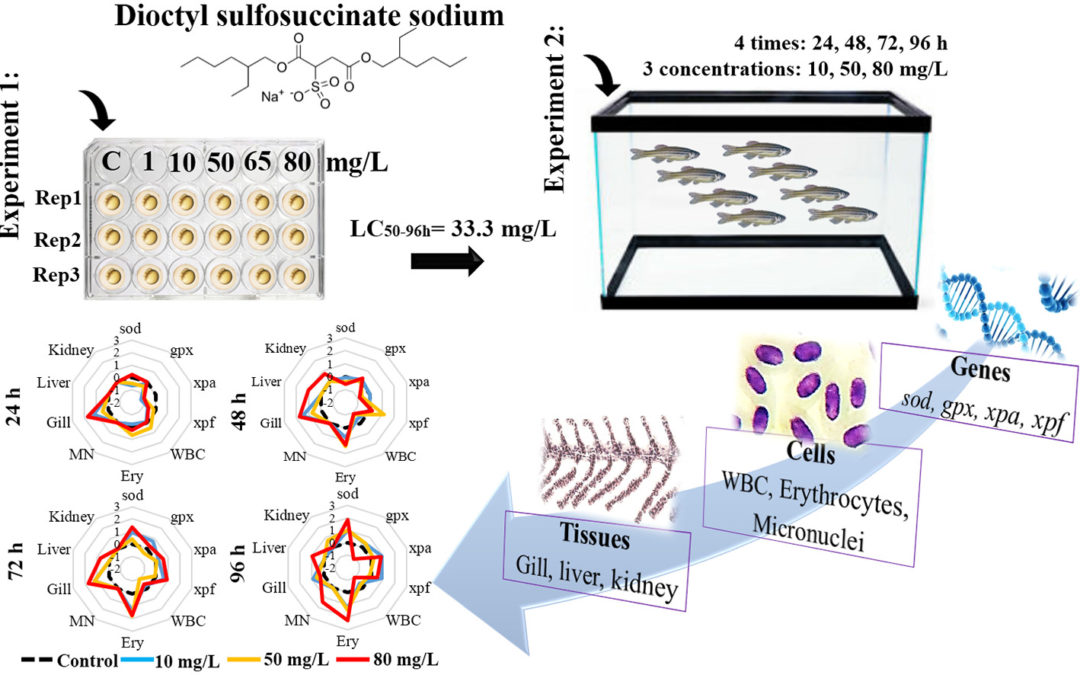Authors: Carlos Eduardo González-Penagos, Jesús Alejandro Zamora-Briseño, Monica Améndola-Pimenta, Juan Antonio Pérez-Vega, Jorge Montero-Muñoz, Mayra Alejandra Cañizares-Martínez, Rossanna Rodríguez-Canul
https://doi.org/10.1016/j.taap.2022.116019
Abstract
Dioctyl Sodium Sulfosuccinate (DOSS, CAS 577-11-7) is a chemical emulsifying surfactant that is widely used in the food and the cosmetic industry, and it is also the major component of the crude oil chemical dispersant Corexit™. Despite of its wide use, the studies related to its negative effect have been evaluated mainly in marine environments showing that DOSS is highly bioactive, extremely low volatile, and potential to persist in the environment longer than other dispersant components. Up to date, there is no available information of DOSS concentration in freshwater environments, little is known about its downstream fate after excretion and its effect on freshwater organisms. The objective of this study was to evaluate the effect of DOSS at different concentrations in embryos and adults of zebrafish Danio rerio in an acute-static bioassays of 96 h. The median lethal concentration in embryos was 33.3 mg/L. Malformations started to be observed at 10 mg/L. In adults, the gene expression analysis in gill tissues showed a deregulation in genes associated with the antioxidant system and the nucleotide excision repair mechanism. Additionally, Micronuclei (DNA damage) in erythrocytes, and fat degeneration in liver, hypertrophy and hyperplasia in gills, and hyaline drops in kidney tissues were also observed. In conclusion, the concentrations of DOSS evaluated here would be of health relevance to fish based on morphological alterations in embryos and changes in the gene expression profile, DNA damage and tissue impairment in adults.
Keywords: DOSS, Zebrafish, Gene Expression, Genotoxicity, Histopathology, Biological Response


Comentarios recientes